African safari, part 2: Former Amarilloan shares hunting adventures
Donald Jackson was a resident of Amarillo from 1979 through 2007 and was employed at Pantex. Lately, he has been able to make three African safaris, and here he shares a firsthand account of his first trip for his community back in Amarillo. Here is his part two of the three-part series of an account of these hunting adventures.
On Monday morning, our hunt began in earnest. We got up at 5:30, ate breakfast, and by 6:30, we were on our way.
My crew consisted of Zander Lawrence, Professional Hunter, Piet, tracker, and Yours Truly. The ride to the ranch we were hunting was an adventure in itself. The few paved roads run straight for miles, but have sections with huge potholes, so we would be tearing along and suddenly slow to a crawl to navigate potholes, then speed back up. We did not have that problem often, because most of the roads were not paved. The unpaved roads were wash-boarded severely, so we went skittering along the tops of the bumps. I am amazed that those pickup trucks did not leave a trail of parts behind them, but they hold up really well to this abuse.
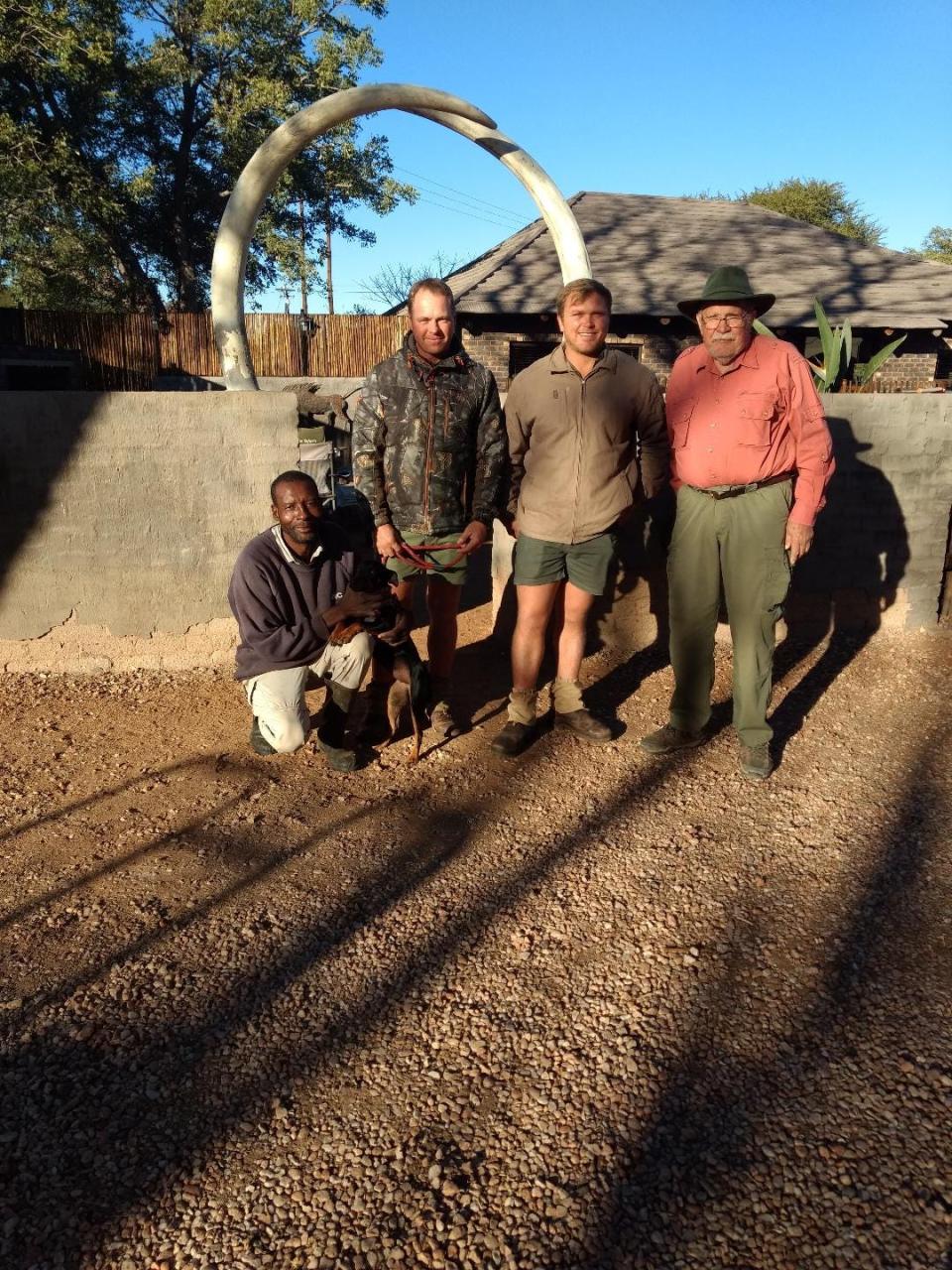
Arriving at the ranch we were to hunt, Piet got out and opened the gate. We entered the ranch and Piet took the wheel, Zander and I climbed up on the high seats behind the cab of the truck. The seats are about level with the top of the cab and afford an excellent view. Zander stood on his seat to get an even better view of the terrain and the animals.
He and Piet have a system of hand signals so that Piet knows when to stop, when to go, when to go faster and when to back up. We went down the two-track at a walk while Zander watched for and sized up the animals. Not too long after we started hunting, he signaled for a stop. I could see large animals in the brush to our right front but could not tell what they were. Then a magnificent Kudu stepped into the road in front of us. Zander said: “He is a young bull, good but his horns do not curl around to the front. Let him go.” So I watched the bull and two cows dash across the road in front of us. These animals know what a truck is, and do not dally too long in front of one! Zander told me that we would see other Kudu, and he was right, we did, but none of them would co-operate to let me get a shot.
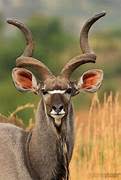
At about 9:30, Zander spotted a Waterbuck. He quickly determined that this was a very large animal, and we were able to take him. I was shooting a 1952 vintage Remington rifle given to me by a friend when I left Texas, and was happy to tell him the old rifle worked as well in Africa as it had in Texas. After we recovered the animal, Zander began flailing at the ground with a machete that had the last six inches of the blade bent at an angle. He cleared an area about ten feet across of all grass and debris, then he and our tracker drug the antelope to the center and positioned it for pictures. He then brushed its fur and made sure that it was dust-free, so that the picture would do proper homage for this animal that had given its life to provide food for us. We took the animal to the skinning shed, where our tracker field dressed it and put it into the cold storage locker. He then cleaned out the entrails and put them away for future use – they don’t waste any part of an animal, or as we used to say, they “Use everything but the squeal.”
We then proceeded on our hunt. Later that day I shot a fine Red Heartebeast. This is a long-faced animal with some very curious horns that form a lyre shape and then turn straight back. A very unique animal that fairly screams “Africa.” One shot broke both his shoulders and killed him instantly, which is always my goal when I hunt.The next animal was a gemsbuck (oryx). We had been seeing them all day, but none that Zander approved of. About 5:00 we saw one that he said was an excellent specimen. At this point, I made a bad mistake. Hunting in Tennessee, Texas, Colorado and Kentucky I have always been taught to shoot through the ribs, behind the shoulder, because that does not waste any meat. In Africa, hunters are taught to break the shoulders, so that the game cannot run away. I shot my gemsbuck just like I would shoot a whitetail deer, about 4” behind the shoulder.
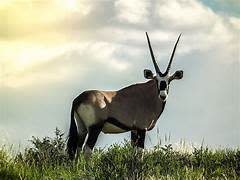
Oops. We went to where the gemsbuck had disappeared into the brush and started tracking him. I got to see our tracker at work, and a fine tracking job he did, but that animal was on its feet and was not going to let us catch up that evening.
We returned to camp that evening with me feeling good about the two animals we had in the refrigerator but bad about not finding the gemsbuck piled up within 200 yards like a deer or an elk would have been with that shot placement.
Roberto had prepared another sumptuous meal, with home-made rolls, two salads, cauliflower in cream sauce, mixed vegetables and sable steaks. The sable was tender, juicy and delicious! There was baked chicken available, but it went uneaten.
We then spent a short time around the campfire with the other hunters, then off to bed.
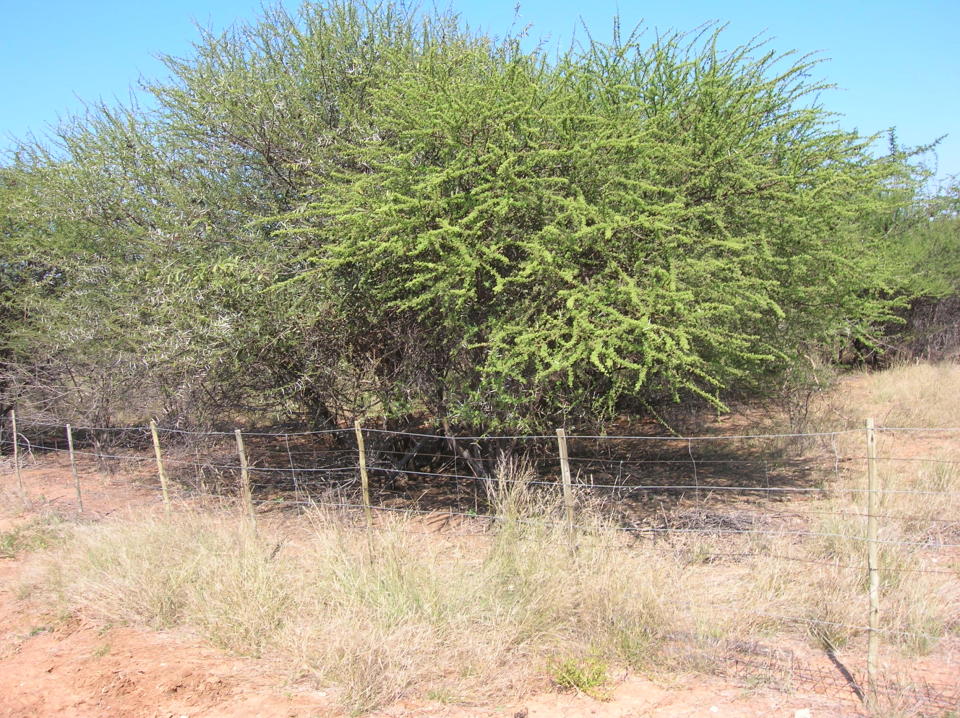
The next morning, we returned to the place where I had shot the oryx. We searched for several hours, but he was not to be found. I did find out about the thorns on the trees and bushes during this search. Everything has thorns, and all of them wanted to stick themselves into my body. If I touched a branch at all, I had to stop and detach myself from it. Fortunately, I was wearing a canvas shirt and heavy pants. Zander was wearing shorts. He acquired several new thorns in his legs, to go with the thorns from other hunts. He was very philosophical about this: “They will work their way out during the off season.” We left the trailing to the workers on the farm, who found my gemsbuck soon after, and continued our safari. I referred to him as “MY Gemsbuck” because the rules are very simple: “You break it, you have bought it.” I would have paid the fee for the animal whether he had been found or not. This is quite in line with the game animals being considered the equal to the cattle, sheep or goats that would be forcing them out if not for the income they provide.
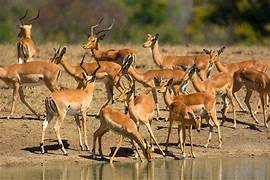
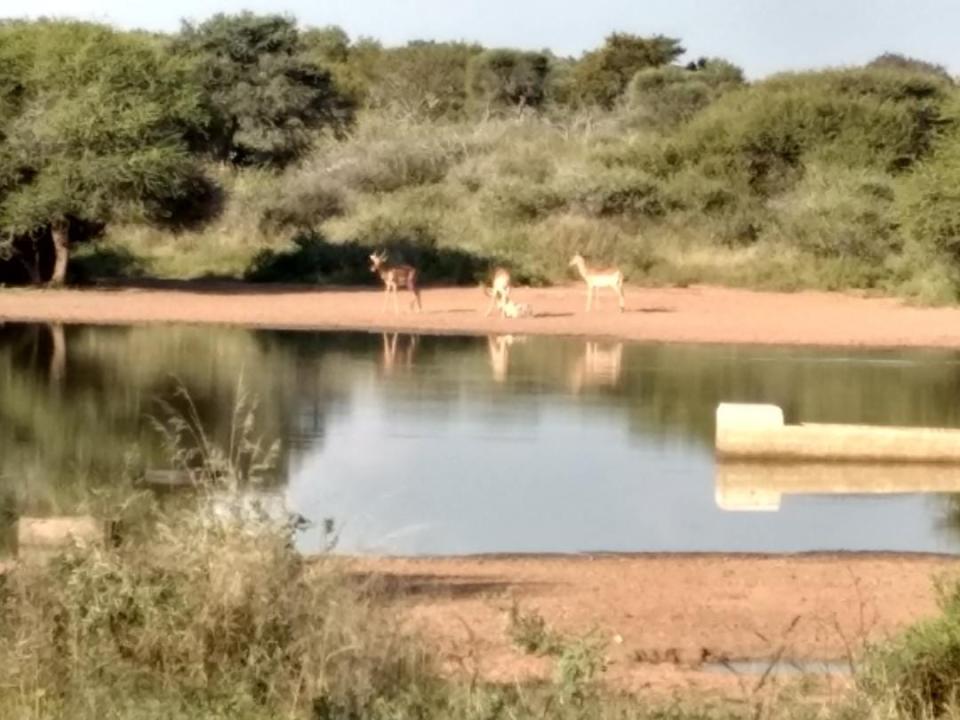
Later that morning we encountered some Impala. We had been seeing them all during our hunt, but they had been in thick cover and no shot was available. We found some that were in an open area, and Zander determined that there was a suitable ram in the group. He was about 100 meters distant when we saw him, I made the shot and he was on his way to the freezer. Zander and Piet conversed with the farm workers and learned that they had recovered the Gemsbuck for us and it was duly cared for, which made me feel much better.
Part three will begin with Jackson's crew looking for Blue Wildebeast.
This article originally appeared on Amarillo Globe-News: African safari, part 2: Former Amarilloan shares hunting adventures

